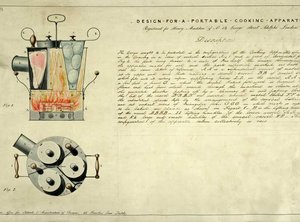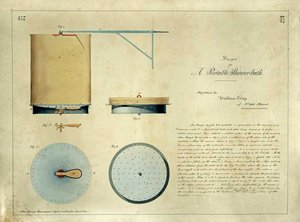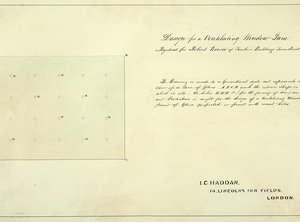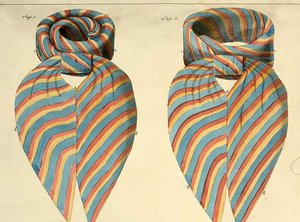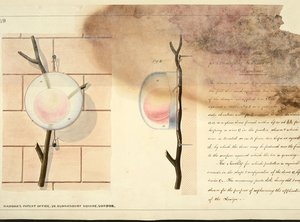Record revealed
Registered design for an expanding travelling basket
In 1866, a British luggage manufacturer attempted to capitalise on the expansion of railway lines with a unique and royal travel bag, beating Louis Vuitton in the process.
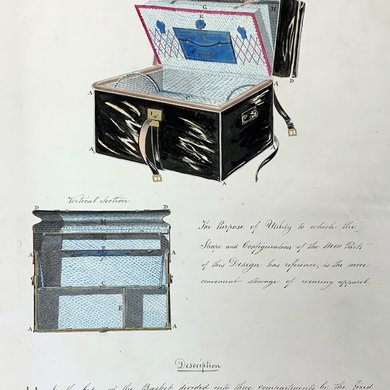
Image 1 of 4
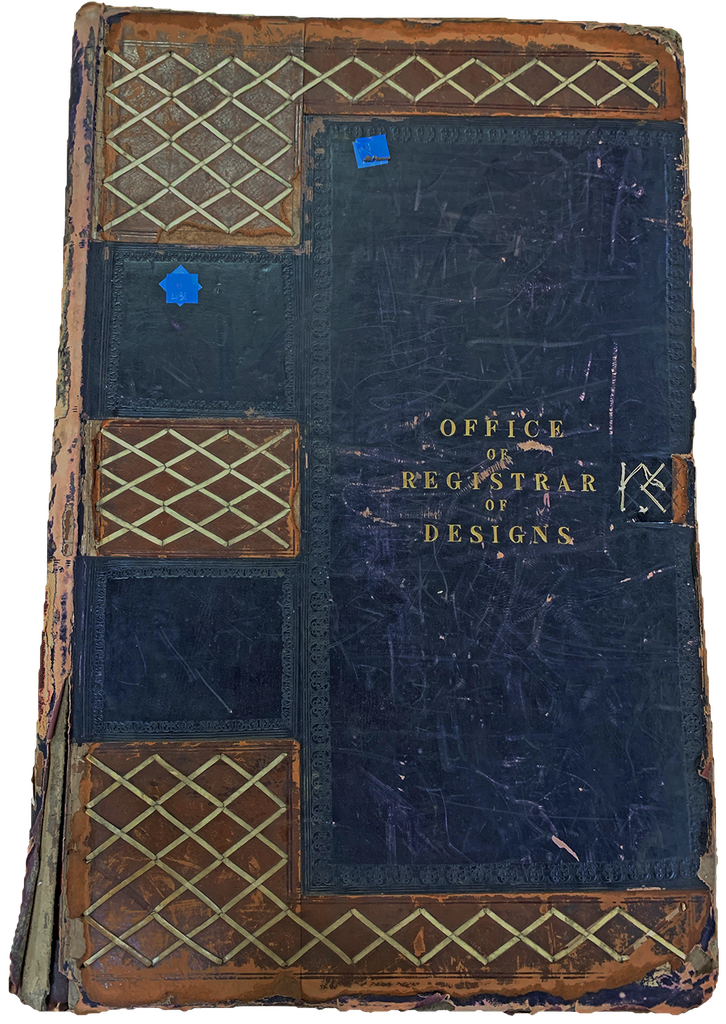
Front cover of a volume compiled by the Office of Registrar of Designs, which includes Harriet J. Cave & Sons' design for an expanding railway basket.
Image 2 of 4
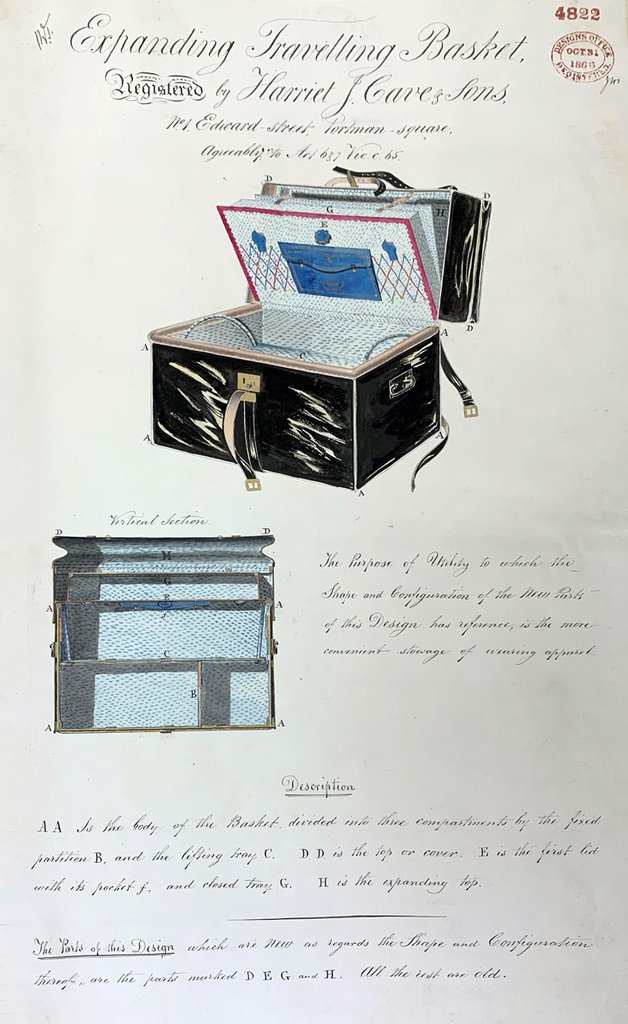
The record depicts the new design for the expanding railway basket with two drawings.
Image 3 of 4
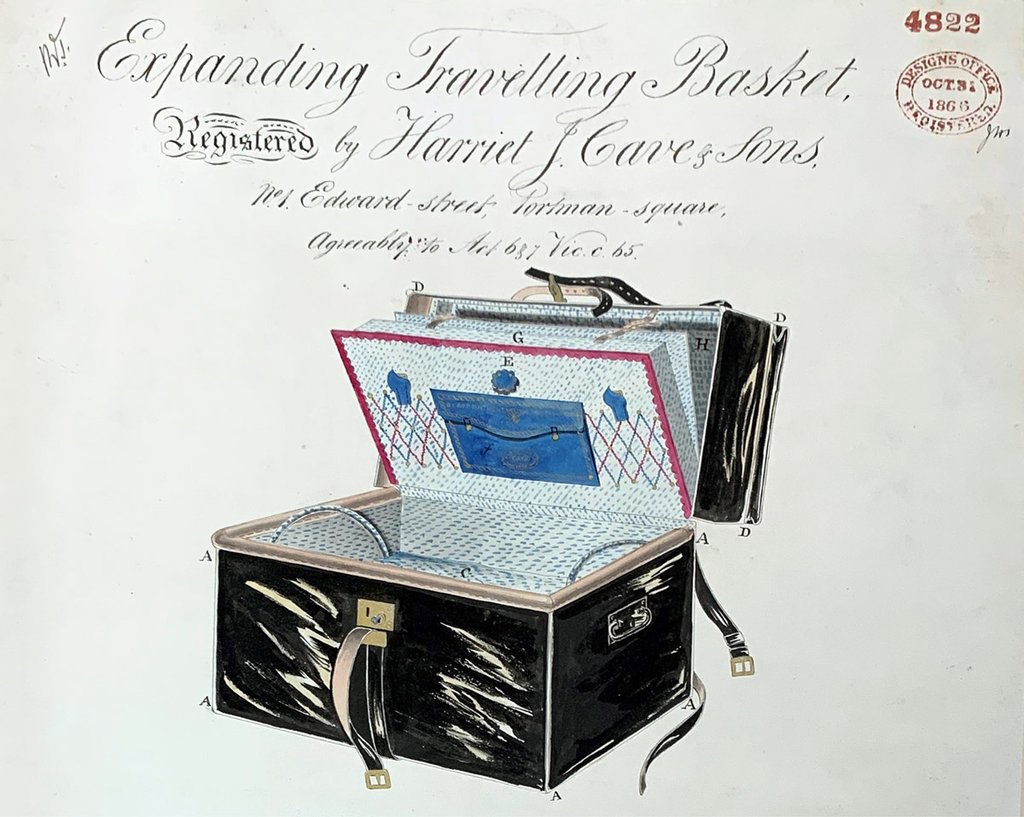
The company used this drawing and description to register it for copyright protection in 1866.
Image 4 of 4
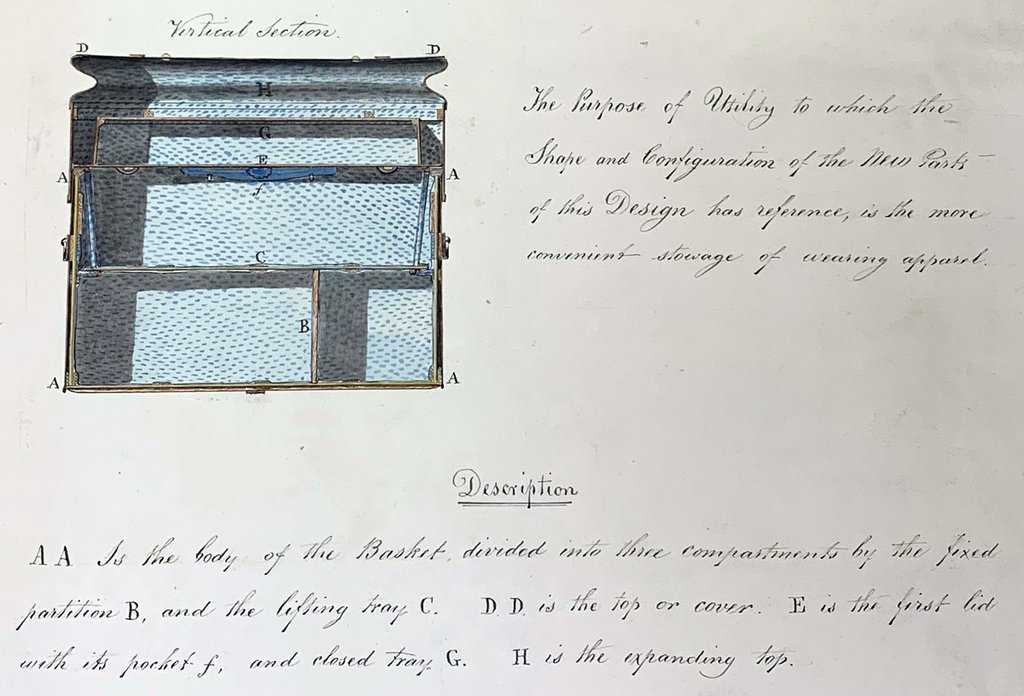
This 'vertical section' view of the basket displays the storage space of five compartments and a removable tray.
Transcript
The Purpose of Utility to which the Shape and Configuration of the New Parts of this Design has reference, is the more convenient stowage of wearing apparel.
AA Is the body of the Basket, divided into three compartments by the fixed partition B, and the lifting tray C. D. D. is the top or cover. E is the first lid and with its pocket f, and closed tray G. H is the expanding top.
Why this record matters
Date: 31 October 1866
As long-distance travel opened up with the expansion of railway and passenger steam lines in the 19th century, lightweight and convenient luggage options were highly sought after. This record depicts a new design for an expanding railway basket created by basket and luggage manufacturers Harriet J. Cave & Sons. The railway basket would have improved the comfort of travelling with a structure made of wicker, making it a lighter alternative to the traditional wooden trunk. The innovation in the design came in the form of the expandable form of the lid which allowed for more or less space as required. The basket had five compartments and a removable tray to keep the contents organised.
Harriet Jane Cave (1821–1874) took over the running of the business in Edward Street (now Wigmore Street) in Marylebone, London, after the death of her husband Benjamin in 1853. The business had enjoyed modest success since 1839 when Benjamin Cave began operations as a ‘turner and toyman’, but under Harriet’s leadership the business flourished, acquiring a significant reputation and elite clientele based on their range of high-end luggage and bags.
In 1863, Harriet J. Cave & Sons was issued with a Royal Warrant for the supply of trunks to the Princess of Wales and her daughter, the Princess Victoria. The drawing of the railway basket supplied for the registration of the design incorporated the wording of the warrant ‘By Appointment to the Princess of Wales’ on the interior pocket.
These products attracted global admiration when Harriet J. Cave & Sons exhibited at the 1862 International Exhibition in London and then at subsequent world’s fairs, winning medals and prizes. At the 1867 Paris International Exhibition they won a first prize silver medal, beating competitors Louis Vuitton who were awarded bronze.
While women-run businesses did not defy convention in Victorian Britain, Harriet’s success was remarkable and this record, demonstrating an awareness of the value of a unique design, is further indication of her entrepreneurial spirit.
